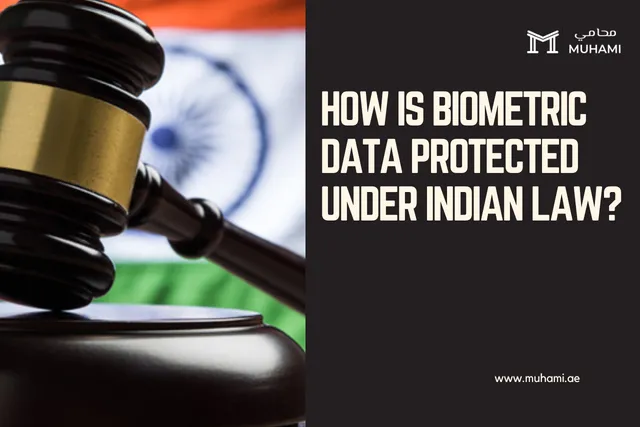The Role of Technology in DIFC Courts: 2025 Innovations and Future Directions

This article has originally been published on www.Sklegalfirm.com
The Dubai International Financial Centre (DIFC) is a significant financial free zone that operates under its own distinct legal framework. It features an independent judicial system known as the DIFC Courts, which are governed by specific laws and regulations that differ from those of other courts in Dubai and the UAE. The DIFC Courts function autonomously, adhering to the provisions set forth by DIFC laws and regulations.
Notably, all proceedings within the DIFC are conducted in English, contrasting with other courts in Dubai where Arabic is the official language. DIFC Courts are becoming increasingly significant in the realm of international dispute resolution, due to several key factors such as their independent judicial structure, their common law framework, use of English language and adherence to high legal standards.
The digital transformation of court procedures is a significant step towards a more efficient, accessible, and transparent judicial system. By integrating technology into legal processes, smart legal systems streamline operations, reduce delays, and enhance the overall experience for lawyers, judges, and litigants. This transformation not only simplifies access to legal information but also fosters greater accountability within the judiciary.
The Evolution of DIFC Courts and Legal Technology
Paperless eCourt Management, E-bundling systems
The transition to electronic systems is imperative for the legal industry. Electronic systems and digital tools can substantially reduce the costs associated with document preparation and management. By minimizing reliance on paper documents, both litigants and legal practitioners can significantly lower their printing expenses and other related costs, leading to more efficient resource allocation.
Digital solutions such as e-bundling enhance collaboration among legal teams by facilitating seamless sharing and access to documents. This improved accessibility allows team members to work together more effectively, regardless of their physical locations. Electronic systems also facilitate streamlined archiving and retrieval processes enabling legal professionals to swiftly access past cases and important documents.
Digital Court Management Tools
DIFC Courts exemplify a progressive approach towards integrating technology within the judicial system. In 2021, the DIFC Courts officially confirmed that 100% of their internal processes and customer-facing services are operating fully digital.
Some of the technologies introduced by the courts to enhance and facilitate judicial processes include the e-Registry launched in 2009, the digitally integrated courtroom and the advanced e-Court Management System (CMS) implemented in 2017 and the e-bundling solution introduced in 2018.
Special project initiatives under the Courts of the Future have also assisted the DIFC Courts with advanced R&D activities, uniting individuals and companies helping to prototype and launch the advancement of court technology, such as blockchain-powered initiatives, AI-enabled programmes and cloud-based solutions.
Key Technological Innovations in DIFC Courts
e-Bundling Systems and Digital Tools for eCase Filing
In February 2018, the DIFC Courts initiated the introduction of ‘paperless trials’, implementing e-bundling system which is a secure cloud-based technology. The e-bundling system allows court documents to be uploaded from anywhere in the world, enabling judges, lawyers, and courts staff to access case information in various formats, across multiple locations, and share with numerous users.
All hearings conducted in the DIFC Courts require bundles to be submitted electronically, whether they are in-person hearings, virtual Hearings or semi-virtual hearings.
The bundles are uploaded onto DIFC Courts’ eRegistry bundling system, which facilitates a streamlined and efficient process for managing case documentation.
Video Conferencing and Virtual Hearings Enhances Access to Justice Remotely
Virtual hearings have become increasingly prevalent in DIFC Courts. In 2023, the DIFC Courts issued a Virtual Hearing and Bundling Protocol to standardize virtual court proceedings. The Protocol applies to civil and commercial proceedings conducted as Virtual Hearings under the jurisdiction of the Small Claims Tribunal, the Court of First Instance and the Court of Appeal.
Artificial Intelligence in Judiciary: AI analytics for legal research and case predictions
The DIFC Courts have issued guidelines for incorporating AI in legal proceedings, highlighting the importance of transparency and responsible usage of AI-generated content in litigation. This initiative represents a crucial advancement in the integration of AI within legal practices while also addressing potential challenges.
We provide a brief overview of the guidelines herein below:
- Parties should declare at the earliest possible opportunity if they have used or intend to use AI-generated content during any part of proceedings.
- Parties should not rely on AI-generated content without first verifying its accuracy. This should be done using independent sources such as case law, statutes, and credible legal commentary (for example, practitioners’ texts).
- When using AI-generated content, practitioners should always be mindful of their obligations under the Mandatory Code of Conduct for Legal Practitioners in the DIFC Courts (DIFC Courts’ Order No. 4 of 2019). Parties should ensure they do not breach any relevant laws, including the Data Protection Law 2020 (DIFC Law No. 5 of 2020) and the Intellectual Property Law 2019 (DIFC Law No. 4 of 2019) (as amended).
- Parties should not become overly reliant on AI tools to produce their documents for proceedings.
- Practitioners should keep their clients properly informed and seek their consent to use GCG material in making submissions during proceedings before the DIFC Courts.
- Parties should ensure they review the AI tool they intend to use to understand if it can complete the required task.
Blockchain Technology: Transparent and Secure Record-Keeping For Legal Documents.
Blockchain technology helps in creation of secure records and is useful for evidence management and document verification. Blockchain ensures that all records are not only securely stored but also easily accessible for verification purposes which increases overall transparency in legal proceedings.
DIFC Courts have introduced a number of blockchain powered initiatives. For example, DIFC Courts recently announced the launch of Digital Assets Will which empowers individuals to distribute their digital assets using a non-custodial DIFC Courts wallet.
A non-custodial wallet also allows an individual the freedom to reallocate the assets to the desired beneficiaries within their wallet, and for full control to mobilise in and out of the wallet in their lifetime, with assets finally distributed as ‘specific gifts’.
The Benefits of Legal Digitalisation in DIFC Courts
Enhanced Judicial Efficiency Through Automation
Automated systems such as e-filing significantly decrease the dependence on paper documents. These systems not only accelerate the overall workflow but also help to minimize the potential for human error. This transition to digital solutions promotes greater accuracy and efficiency in managing information, ultimately leading to faster response times and improved service delivery.
Greater Access to Justice With Remote Legal Services
Remote legal services such as virtual hearings, play a crucial role in improving access to justice. By enabling individuals to participate in legal proceedings without the burden of travel, these services break down geographical barriers.
Improved Transparency With Blockchain-Secured Legal Records.
Blockchain technology offers the capability to create immutable records that are both secure and transparent. This characteristic is vital in the legal field, as it plays a significant role in preventing fraud and safeguarding the court documents. Each transaction recorded on the blockchain is permanently etched in a manner that cannot be modified or erased retroactively. This feature not only enhances the accuracy of legal records but also instills greater trust among stakeholders.
Cost-Effective Legal Processes for International Litigants
E-filing enables litigants to submit documents from anywhere in the world which eliminates the necessity for physical presence in court, and significantly reduces the delays often associated with traditional paperwork. For international litigants, who may be navigating different time zones and jurisdictions, this capability is especially crucial. Furthermore, virtual hearings allow international litigants to participate in legal proceedings without the need for travel. This not only saves considerable time but also minimizes costs associated with international travel, accommodation, and other logistical challenges.
Conclusion
DIFC Courts are leading the way in incorporating advanced technology into their operations, which has significantly transformed the judicial experience. Since their establishment, DIFC Courts have launched initiatives such as digitally integrated courtroom and a comprehensive e-Court Management System, which enhance access to justice through digital means.
During challenges like the COVID-19 pandemic, DIFC Courts effectively utilized their digital infrastructure to sustain services, employing videoconferencing for hearings and issuing digital orders, thereby ensuring continued access to justice for users across various platforms.
Any Questions?
Connect with lawyers and seek expert legal advice
Share
Find by Article Category
Browse articles by categories
Related Articles

AI and Contracts: Could a Robot Lawyer …
At a co-working space in Dubai Marina, a startup founder leans over her laptop.…

AI and Contracts: Could a Robot Lawyer Draft Your…
At a co-working space in Dubai Marina, a startup …

How Do We Regulate Chatbots? A Closer L…
Conversational AI (technology that enables machines to engage in human-like dia…

How Do We Regulate Chatbots? A Closer Look
Conversational AI (technology that enables machin…

How is Biometric Data Protected Under I…
INTRODUCTION Biometric data, including fingerprints, facial scans, and…

How is Biometric Data Protected Under Indian Law?
INTRODUCTION Biometric data, including f…
